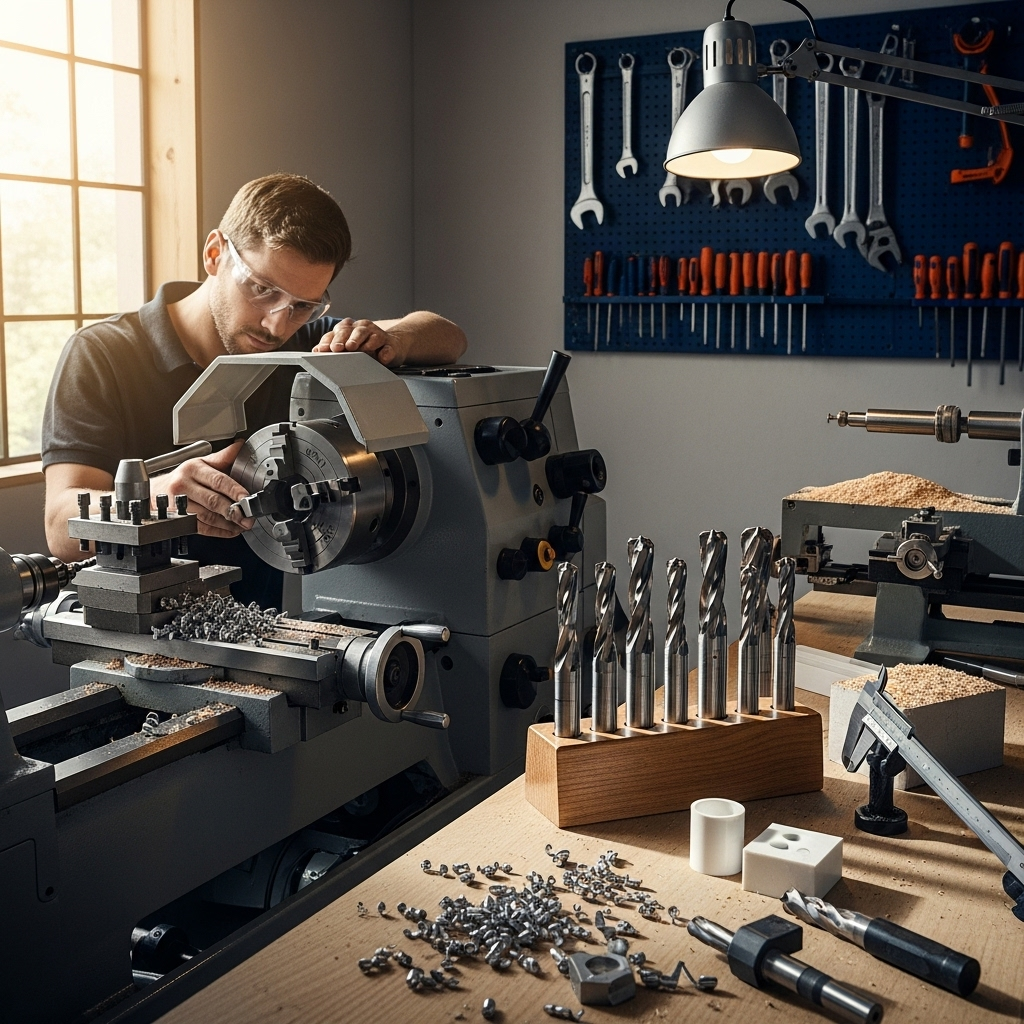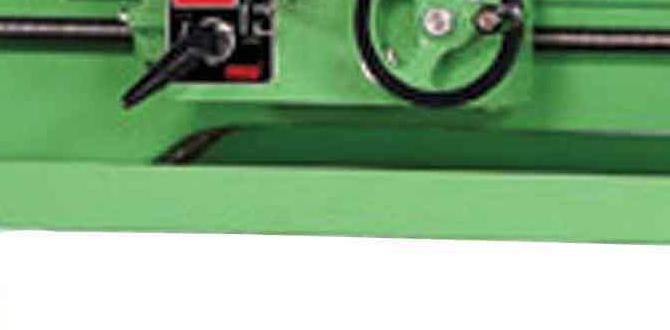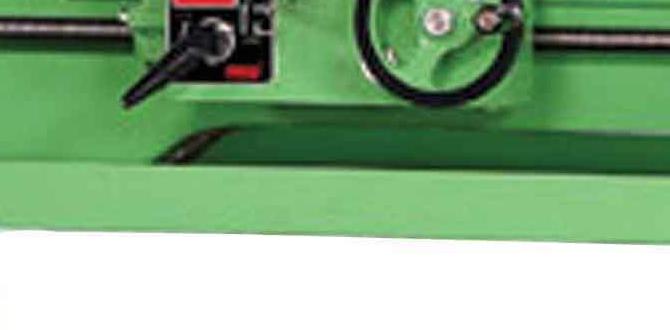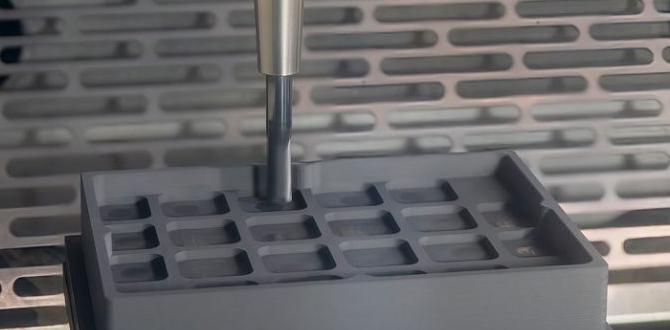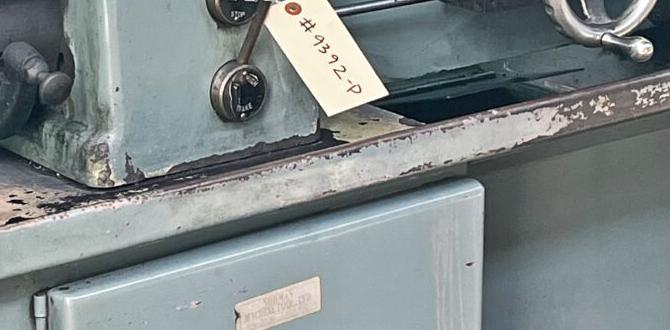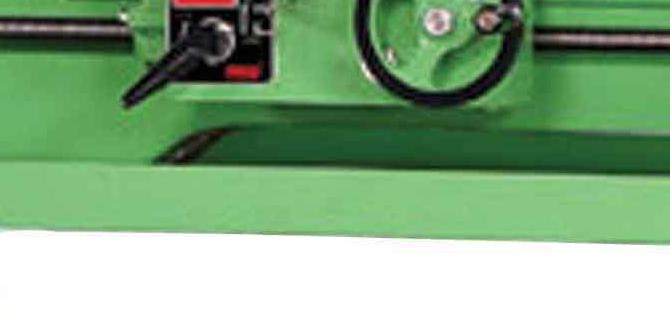Ball Nose vs. Corner Radius End Mill for PVC: Choose the Right Tool for Smooth Cuts!
Struggling to get clean edges when cutting PVC with your end mill? The choice between a ball nose and a corner radius end mill can make all the difference. Both are great for different tasks, but knowing which to grab for PVC will save you time, effort, and frustration. Let’s dive into understanding these tools so you can achieve perfect PVC projects every time, from simple holes to complex carvings.
Understanding Your End Mills: Ball Nose vs. Corner Radius
When you’re working with materials like PVC, the right cutting tool can transform your results. End mills are versatile cutting tools used in milling machines to create a variety of shapes and features. For PVC, two popular choices are the ball nose end mill and the corner radius end mill. They might look similar at first glance, but their distinct geometries lead to very different cutting actions and surface finishes on plastic materials like PVC.
Choosing the correct end mill isn’t just about getting a good cut; it’s about preventing melting, chipping, and unnecessary wear on your tool and your machine. For beginners, this choice can seem a bit daunting. But don’t worry! We’re going to break down exactly what these end mills are, how they differ, and when you should use each one specifically for your PVC projects. This knowledge is key to achieving those smooth, professional-looking finishes that make your DIY projects shine.
The Ball Nose End Mill: For Curves and Contours
A ball nose end mill, often called a ball end mill, has a cutting edge that forms a perfect hemisphere at its tip. Imagine a ball that’s been cut in half – that’s essentially the shape of the cutting surface. This unique shape means that the entire diameter of the tool is engaged when you plunge directly into the material at an angle, allowing for the creation of smooth, curved surfaces.
Because it has no sharp corners, the ball nose end mill is excellent for carving out 3D shapes, creating contour cuts, and machining rounded pockets. When working with PVC, the rounded tip helps to distribute the cutting load more evenly, which can reduce the risk of chipping and melting compared to an end mill with sharp corners. This is especially beneficial when you need to achieve a smooth, flowing finish, like in decorative engraving or creating rounded edges on your parts.
The ball nose end mill vs corner radius end mill for PVC distinction becomes crucial here. If your goal is to create a concave surface or a smoothly curved fillet, the ball nose is your go-to. Its ability to blend surfaces seamlessly makes it perfect for artistic or ergonomic designs.
Key Characteristics of Ball Nose End Mills:
- Geometry: Spherical tip.
- Cutting Action: Ideal for 3D contouring, carving, and creating rounded pockets or fillets.
- Surface Finish: Can produce very smooth, flowing surfaces, especially in Z-axis movements.
- Applications: 3D sculpting, mold making, creating rounded grooves, engraving.
The Corner Radius End Mill: For Stronger Edges and Defined Pockets
A corner radius end mill, also known as a radius end mill or round nose end mill (though this can sometimes be confused with a ball nose, so specificity helps!), is similar to a standard square end mill but features a rounded corner where the flutes meet the cutting edge. This radius is usually specified by a measurement, such as 0.03” or 0.06” radius. Unlike the ball nose, which is a full hemisphere, the corner radius only has a defined round on the tip’s edges along the flutes.
This rounded corner provides a benefit: it strengthens the cutting edge, making it more robust and less prone to chipping under heavy loads. When machining PVC, this can be advantageous for creating sharp, defined internal corners in pockets or slots, while still avoiding the sharp, brittle corners that can break off a square end mill and leave a poor surface finish.
The corner radius end mill excels at creating pockets with slightly rounded internal corners. These rounded corners are stronger than a sharp 90-degree corner and are less likely to cause stress fractures in the material. For many functional PVC parts, such as brackets or enclosures, having slightly radiused internal corners is both practical and aesthetically pleasing. It also helps in preventing material buildup and stress concentration.
When considering the ball nose end mill vs corner radius end mill for PVC, the corner radius is generally the better choice for creating crisp tool paths with controlled corner rounding. It offers a good balance between the sharpness of a square end mill and the smoothness of a ball nose, making it highly versatile for a wide range of machining tasks on plastics.
Key Characteristics of Corner Radius End Mills:
- Geometry: Square tip with a defined radius at the corners.
- Cutting Action: Good for creating pockets with rounded internal corners, profiling, slotting, and general milling.
- Surface Finish: Leaves clean, defined edges with controlled radii.
- Applications: Machining pockets, slots, creating stronger internal corners, general-purpose milling.
Why the Choice Matters for PVC
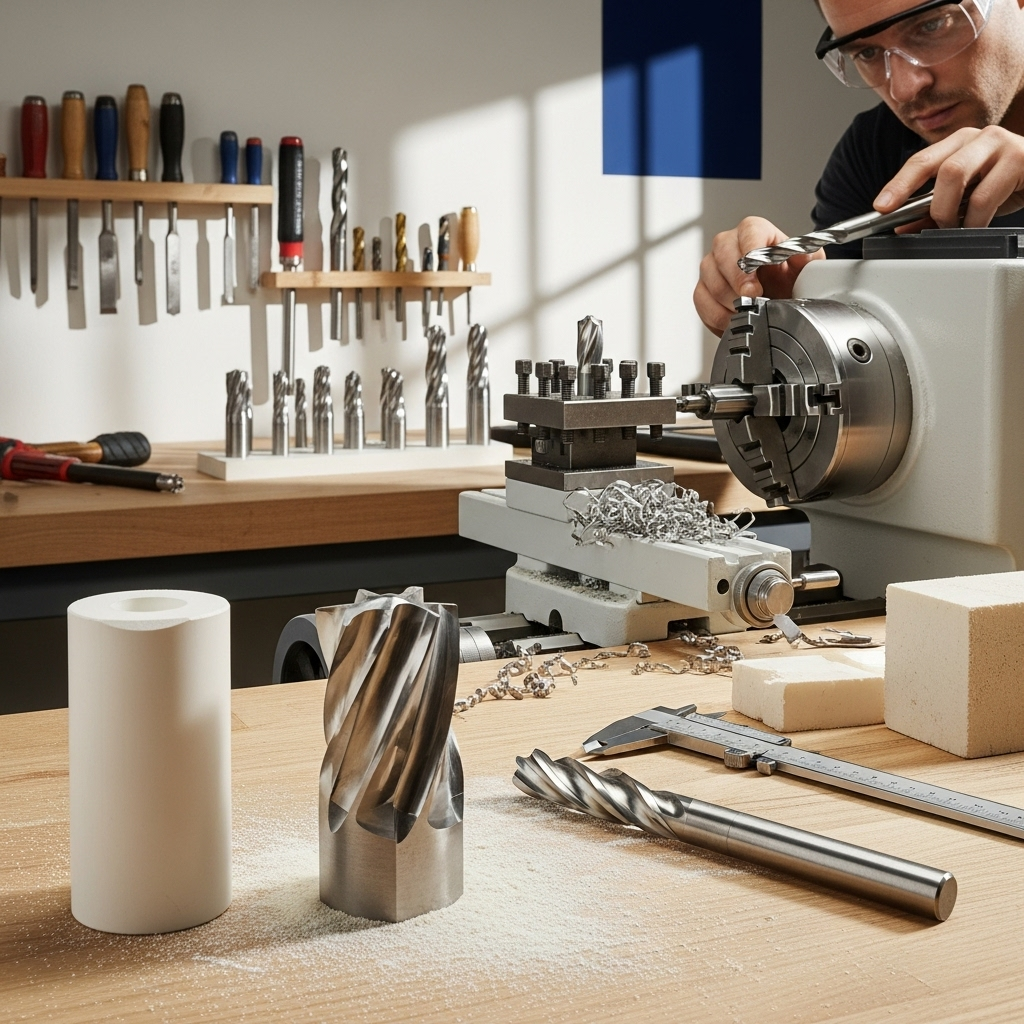
PVC (Polyvinyl Chloride) is a thermoplastic, meaning it softens and melts when heated. This property introduces unique challenges when machining. Machining generates heat through friction, and if the heat isn’t managed properly, the PVC can melt onto the cutting tool, leading to poor surface finishes, tool buildup, and even damage to the workpiece. The geometry of the end mill plays a significant role in how this heat is generated and dissipated.
A square end mill, with its sharp 90-degree corners, concentrates cutting forces and heat in small areas. This can quickly lead to melting and a gummy finish on PVC. Both ball nose and corner radius end mills offer an improvement by distributing the cutting forces more broadly due to their rounded geometries.
However, the way they do this is different:
- Ball Nose: Its fully rounded tip is excellent for spreading the load over a larger curved area, which can reduce localized heat buildup. This is particularly advantageous for freeform carving where the tool is constantly changing its engagement angle with the material.
- Corner Radius: The radius corners help to prevent the sharp, high-pressure points of a square end mill. This allows for cleaner cuts and better chip evacuation, which are critical for managing heat in PVC. It provides a good compromise for tasks that require both efficient material removal and a decent surface finish.
Understanding the ball nose end mill vs corner radius end mill for PVC requires recognizing that the “best” choice depends on the specific operation. For intricate 3D shapes and smooth, flowing transitions, a ball nose is often superior. For cleaner pockets, slots, and parts that need defined but slightly rounded corners, a corner radius end mill is typically more appropriate and often more durable for general-purpose use on PVC.
When to Use a Ball Nose End Mill for PVC
You’ll want to reach for your ball nose end mill when your project demands smooth, organic shapes or intricate 3D features. These end mills are the artisans of the cutting world, capable of creating flowing lines and curved surfaces that are difficult to achieve with other tools.
Ideal Scenarios for Ball Nose End Mills on PVC:
- 3D Carving and Sculpting: Whether you’re creating an artistic relief, a custom knob, or a decorative panel, the ball nose end mill excels at carving intricate, rounded patterns into the PVC surface.
- Creating Rounded Pockets and Cavities: While a corner radius can round internal corners, a ball nose can create entirely rounded pockets or bowls, offering a smooth, continuous curvature.
- Generating Smooth Contours: For applications where surfaces need to blend seamlessly, like in aerodynamic parts or ergonomic grips, the ball nose is invaluable.
- Chamfering and Filleting with Large Radii: If you need to create large, sweeping fillets or smooth chamfers on edges, the ball nose end mill can achieve this efficiently.
- Engraving and Text: For creating deeply carved text or designs where the tool path follows a curved trajectory, such as in signs or custom panels.
When machining PVC with a ball nose end mill, it’s still critical to manage heat. Using appropriate cutting speeds, feed rates, and potentially a coolant or air blast can further enhance the finish and prevent melting. For more detailed insights into machining plastics, resources such as the National Institute of Standards and Technology (NIST) often have valuable research on material processing.
When to Use a Corner Radius End Mill for PVC
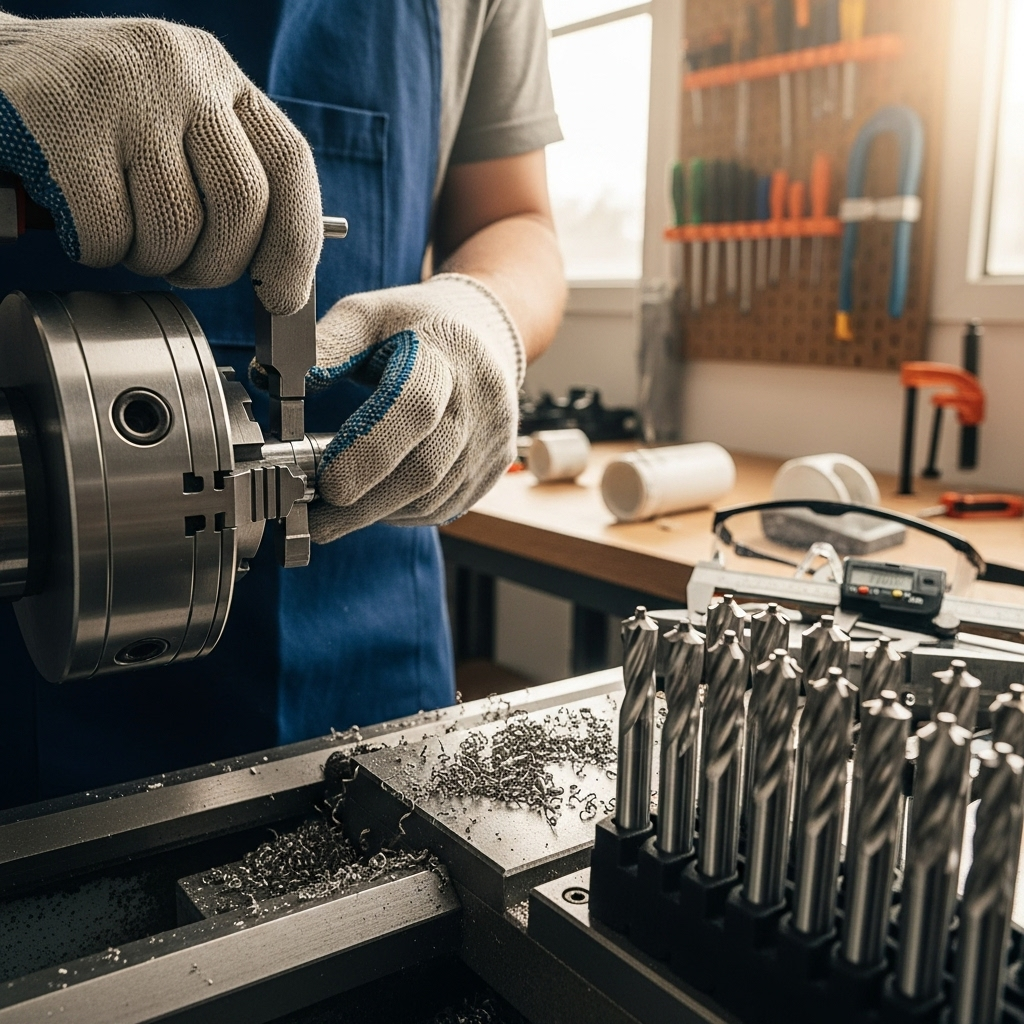
The corner radius end mill is your workhorse for many general-purpose machining tasks on PVC. It offers a great balance between cutting efficiency, edge strength, and surface finish. If your milling jobs involve creating defined spaces, slots, or parts that need to withstand stress without sharp internal corners, this is the tool you’ll likely use most often.
Ideal Scenarios for Corner Radius End Mills on PVC:
- Machining Pockets and Slots: This is a prime application. When you need to mill out a rectangular pocket or a narrow slot, a corner radius end mill will leave a clean, defined edge with a small, controlled radius in the internal corners. This prevents stress risers and potential cracking.
- Profiling and Contouring with Defined Edges: For cutting out the perimeter of a part or creating straight edges with a slight fillet, the corner radius provides a much cleaner and more robust edge than a square end mill.
- Creating Stronger Internal Corners: In structural PVC parts, sharp internal corners can be weak points. A corner radius end mill naturally creates slightly rounded internal corners, which significantly increase the part’s strength and resistance to fracture.
- General Face Milling and Roughing: While not specialized for this, a corner radius end mill can be used for general flattening of surfaces or removing material efficiently, especially if you want to avoid sharp scratch marks.
- Features Requiring Durability: Any PVC component that will be subject to mechanical stress or impact will benefit from the reduced stress concentration provided by radiused internal corners.
The key advantage of the corner radius end mill on PVC is its ability to produce a good finish while maintaining the integrity and strength of the part. It’s a versatile tool that’s often more forgiving for beginners than a square end mill when working with less rigid plastics.
Comparing Performance: Ball Nose vs. Corner Radius on PVC
Let’s put these two end mills head-to-head for common PVC machining tasks. Understanding their performance differences will help you make the right choice every time.
Table: Performance Comparison for PVC Machining
| Feature/Task | Ball Nose End Mill | Corner Radius End Mill | Notes for PVC |
|---|---|---|---|
| Surface Finish (3D Carving) | Excellent, very smooth | Poor (not designed for this) | Ball nose excels at organic shapes and avoiding sharp lines. |
| Surface Finish (Pockets/Slots) | Can be good, but less defined corners | Very Good, defined edges and rounded corners | Corner radius provides cleaner, more precise edges for functional features. |
| Chip Evacuation | Moderate (can sometimes recut chips) | Good (flutes are designed efficiently) | Good chip clearance is vital for PVC to prevent melting. |
| Edge Strength (Internal Corners) | Not applicable (fully rounded) | Excellent (rounded creates stronger corners) | Crucial for structural PVC parts where stress is a concern. |
| Tool Wear / Melt Risk | Moderate (depends on optimization) | Moderate to Low (rounded corners help) | Both are better than square end mills. Proper speeds/feeds are key. |
| Versatility for General Milling | Moderate (specialized for curves) | High (good for pockets, slots, profiling) | Corner radius is a more all-around tool for many PVC tasks. |
| Complexity of Programming | Can be higher for complex 3D paths | Typically simpler for standard pocketing/profiling | For CNC users, consider CAD/CAM capabilities. |
Key Considerations for PVC:
- Heat Management: PVC is prone to melting. Both end mills help, but optimizing feed rates, spindle speeds, and potentially using a lubricant or air blast is crucial. A higher flute count (e.g., 2-flute for plastics) can sometimes help with chip evacuation.
- Chip Load: This is the amount of material removed by each cutting edge per revolution. For PVC, you want a chip load that is sufficient to cut cleanly but not so large that it generates excessive heat and pressure.
- Spindle Speed (RPM): Higher RPMs can mean faster cutting but also more heat if not managed with appropriate feed rates.
- Feed Rate (IPM/mm/min): The speed at which the tool moves through the material. A faster feed rate generally reduces heat buildup by taking larger chips, but must be balanced with cutting forces.
For many hobbyists and DIYers working with PVC, a corner radius end mill will be the more frequently used tool due to its versatility in creating functional parts.
Optimizing Machining for PVC: Speed, Feed, and Lubrication
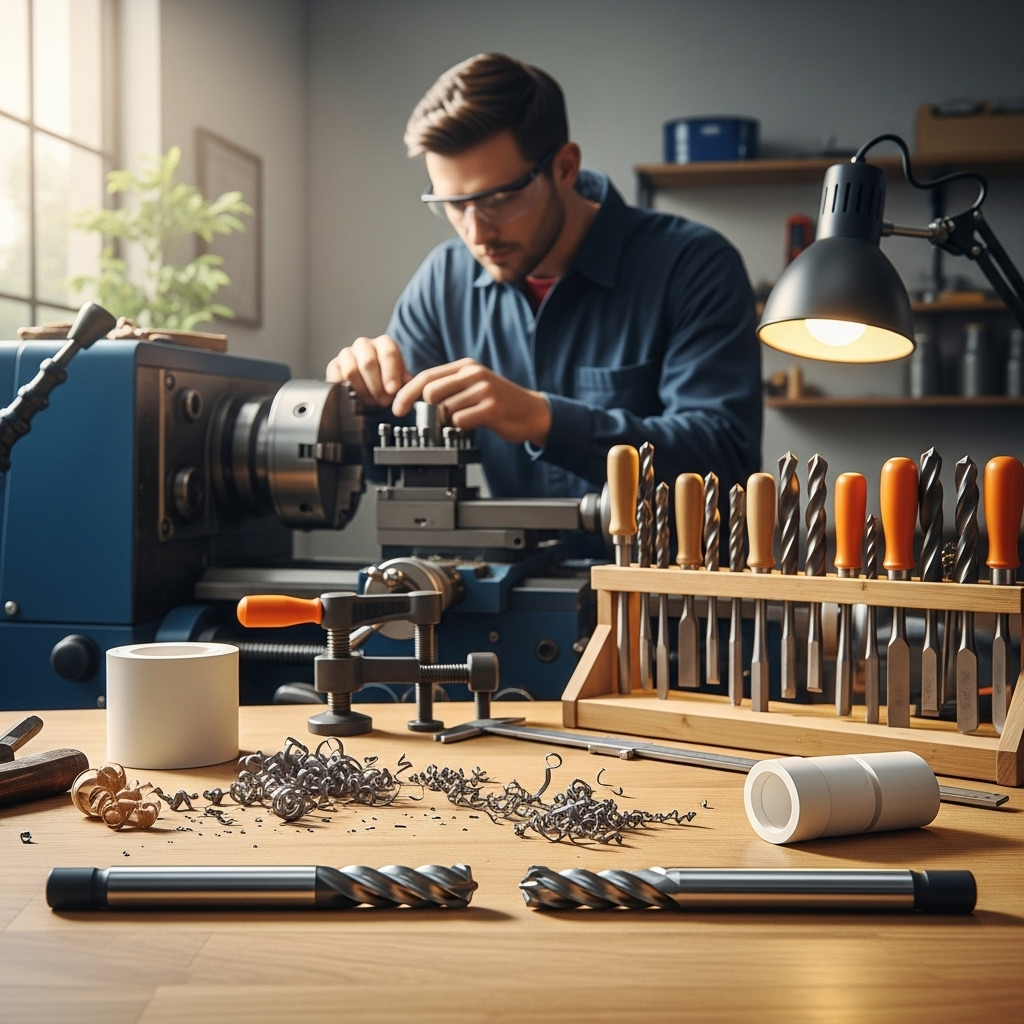
Regardless of whether you choose a ball nose or a corner radius end mill, how you use it with PVC is just as important as the tool itself. Machining plastics like PVC requires a slightly different approach than machining metals.
Cutting Parameters:
Finding the “sweet spot” for spindle speed (RPM) and feed rate (IPM or mm/min) is essential. These parameters directly impact heat generation, chip formation, and tool life. There isn’t a single magic number, as it depends on the specific PVC formulation (e.g., rigid vs. flexible), the thickness of the material, the rigidity of your machine, and the specific insert or cutter geometry.
As a general starting point for PVC:
- Spindle Speed: Often in the range of 10,000 to 25,000 RPM, depending on the tool diameter and material. Smaller diameter tools might run faster.
- Feed Rate: Typically between 20-80 inches per minute (IPM) or 500-2000 mm/min. Larger diameter tools and shallower cuts might allow for faster feeds.
- Depth of Cut: For plastics, it’s usually best to take shallower depths of cut (e.g., 0.010″ to 0.100″ or 0.25 to 2.5 mm) rather than trying to hog out material. This helps manage heat and makes for cleaner cuts.
It’s always a good idea to consult the tool manufacturer’s recommendations or perform test cuts on scrap material. For detailed information on machining plastics, look for resources from organizations like the PlasticsToday website, which offers industry insights and technical articles.
Lubrication and Cooling:
Because PVC melts easily, managing heat is paramount. While traditional cutting fluids can sometimes react with certain plastics or create a mess, several methods work well:
- Compressed Air Blast: A stream of compressed air directed at the cutting zone is highly effective. It blows chips away, cools the tool and material, and significantly reduces melting.
- Mist Coolant Systems: These systems spray a fine mist of coolant and air, providing excellent cooling and lubrication with minimal fluid usage. This is often a preferred method for plastics.
- Cutting Pastes/Gels: For manual operations or smaller jobs, specialized plastic machining lubricants can be applied.
- Use High-Helix End Mills: While not solely for lubrication, end mills designed for plastics often have higher helix angles, which help in lifting chips away from the cut more effectively, aiding cooling.
Tool Selection for Plastics:
When buying end mills specifically for plastics like PVC, look for features such as:
- Polished or Bright Flutes: These help chips slide off more easily, reducing friction and buildup.
- Single or Double Flutes: Often preferred for plastics as they provide more space for chips to exit.
- Specific “Plastic” Coatings: Some specialized coatings can reduce friction and adhesion.
By paying attention to these details, you’ll ensure your ball nose and corner radius end mills perform optimally on PVC, giving you the clean, precise results you’re looking for.
Step-by-Step: Machining a Rounded Pocket in PVC
Let’s walk through a common task: machining a rounded pocket in a piece of PVC. For this, a corner radius end mill is usually the best choice. This
